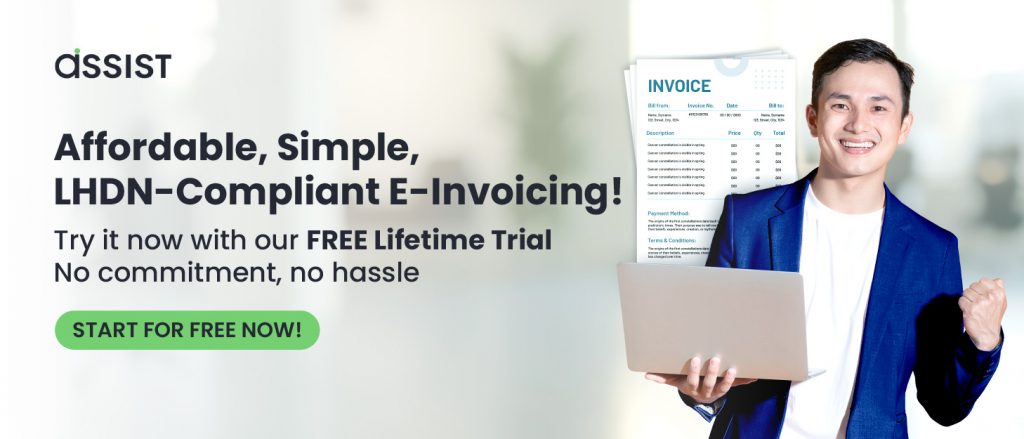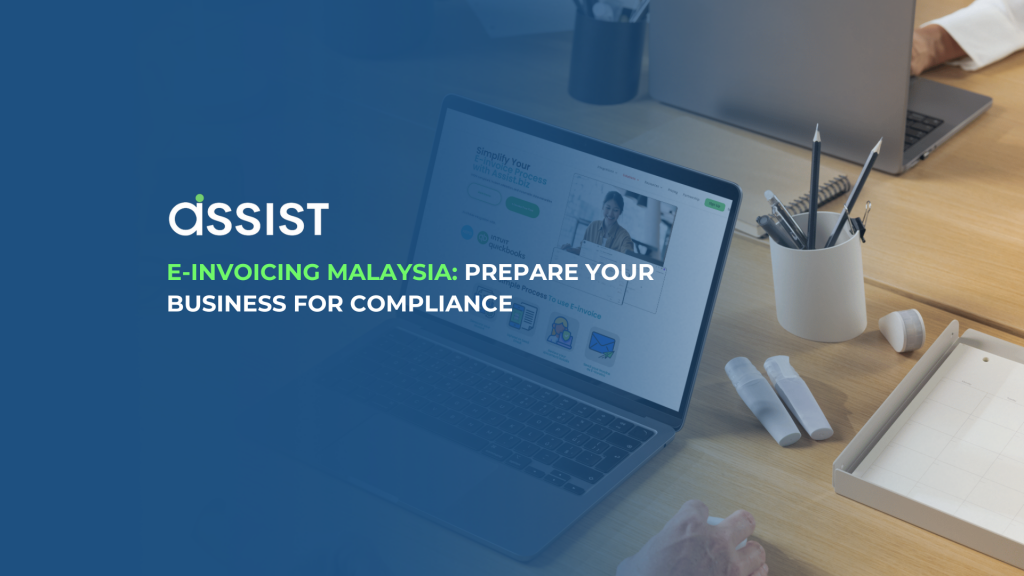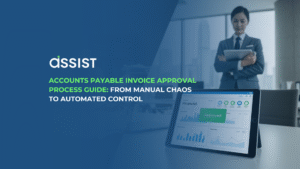The Malaysian government is taking a significant step toward digital transformation by introducing e-invoicing as part of its broader initiative to modernize tax administration. With Lembaga Hasil Dalam Negeri (LHDN) implementing a nationwide e-invoicing framework, businesses of all sizes must understand the requirements, benefits, and necessary steps to ensure compliance and remain competitive in an increasingly digital economy.
This comprehensive guide explores the importance of e-invoicing in Malaysia, the reasons behind its adoption, the key benefits, and a step-by-step approach to help businesses prepare for the transition. Additionally, we will highlight how solutions such as Assist e-Invoice software can simplify compliance and improve efficiency.
Table of Contents
ToggleWhat is E-Invoicing?
E-invoicing is the digital exchange of invoices between buyers and sellers in a structured data format. This replaces traditional paper or PDF invoices, streamlining and automating the invoicing process. It offers numerous benefits, including increased efficiency, accuracy, cost savings, faster payments, improved security, and environmental benefits. E-invoicing is becoming increasingly common, with many countries mandating its use for business-to-business transactions.
Why is Malaysia Adopting E-Invoicing?
The adoption of e-invoicing in Malaysia is driven by several key objectives:
- Enhancing Tax Compliance and Reducing Fraud: Digital invoicing minimizes the risk of invoice fraud and underreporting by ensuring real-time data reporting to LHDN.
- Increasing Efficiency in Business Transactions: E-invoicing eliminates the need for paper-based processes, reducing errors and administrative overhead.
- Facilitating Real-Time Data Reporting: Businesses will benefit from automated submission and validation of invoices, reducing the chances of non-compliance.
- Lowering Administrative Costs: By going digital, companies can save costs on printing, storage, and manual data entry while improving overall efficiency.
Governments worldwide are adopting e-invoicing to improve tax reporting and compliance. Malaysia’s approach aligns with global best practices, ensuring businesses are better equipped for international trade and regulatory requirements.
Timeline for E-Invoice Implementation in Malaysia
LHDN has introduced a phased approach for e-invoicing adoption:
August 1, 2024: Mandatory for taxpayers with an annual turnover exceeding RM100 million.
January 1, 2025: Mandatory for taxpayers with an annual turnover between RM25 million and RM100 million.
July 1, 2025: Mandatory for all remaining taxpayers, regardless of turnover.
It is crucial for businesses to start preparing early to ensure a seamless transition and avoid compliance risks.
Key Benefits of E-Invoicing
✅ Increased Efficiency and Automation
✅ Cost Savings
✅ Faster Payments and Improved Cash Flow Management
✅ Compliance with LHDN Regulations
✅ Enhanced Security and Fraud Prevention
✅ Environmentally Friendly
How to Prepare for E-Invoicing in Malaysia
Businesses must take proactive steps to ensure a smooth transition to e-invoicing. Below are key steps to help organizations prepare effectively:
1. Understand LHDN’s E-Invoice Requirements
It is essential to familiarize yourself with the latest LHDN guidelines, including invoice format, submission process, and compliance requirements. Staying updated with regulatory changes will help your business adapt seamlessly.
2. Assess Your Current Invoicing Process
Evaluate your existing invoicing workflow to identify gaps and inefficiencies. Determine whether you still rely on manual invoicing or outdated software that may not support e-invoicing requirements.
3. Choose the Right E-Invoicing Solution
Selecting an LHDN-compliant e-invoicing software is critical. The software should automate invoice generation, validation, and submission while ensuring seamless integration with existing business systems.
4. Train Your Team
Employees must be educated on the e-invoicing process, system usage, and compliance procedures to ensure a smooth transition.
5. Integrate with Your Accounting and ERP Systems
Ensure that your e-invoicing solution integrates with your existing accounting or Enterprise Resource Planning (ERP) software to maintain operational efficiency.
6. Monitor and Optimize the Process
Regularly review your e-invoicing process to identify areas for improvement, enhance automation, and ensure compliance with LHDN regulations.
Why Choose Assist e-Invoice Software?
Assist e-Invoice is a trusted solution designed to help businesses comply with Malaysia’s e-invoicing requirements while enhancing operational efficiency.
Key Features of Assist e-Invoice:
- LHDN-Compliant E-Invoicing: Ensures all invoices meet regulatory standards.
- Automated Invoice Generation: Reduces manual data entry and human errors.
- Seamless Integration: Compatible with major accounting and ERP systems for smooth business operations.
- Real-Time Submission & Validation: Enables instant submission and verification with LHDN.
- Cloud-Based & Secure: Ensures data accessibility and protection against fraud.
Benefits of Using Assist e-Invoice:
- Faster invoice processing and payments
- Reduced compliance risks and penalties
- Easy integration with business workflows
- Scalable for small businesses to large enterprises
By adopting Assist e-Invoice, businesses can transition to digital invoicing with ease, ensuring compliance and improving operational efficiency.
Conclusion
The transition to e-invoicing in Malaysia is inevitable, and businesses must take proactive steps to stay compliant. Embracing e-invoicing not only ensures regulatory compliance but also enhances efficiency, reduces costs, and strengthens financial management.
By leveraging Assist e-Invoice software, businesses can simplify their invoicing process, minimize compliance risks, and gain a competitive edge in the evolving market. Now is the perfect time to transition to e-invoicing and future-proof your business.
Get started with Assist e-Invoice today and take the first step towards a seamless digital invoicing experience!

FAQ on E-Invoicing in Malaysia:
1. What is e-invoicing?
E-invoicing is the electronic generation, transmission, and storage of invoices in a structured digital format.
2. How does e-invoice work?
E-invoicing replaces paper invoices with a digital exchange of structured data between buyer and seller systems, automating invoice creation, transmission, processing, and payment.
3. What is the official timeline for e-invoicing implementation in Malaysia?
E-invoicing will be implemented in phases. From August 1, 2024, it will be mandatory for businesses with an annual turnover above RM100 million. On January 1, 2025, it will extend to businesses earning between RM25 million and RM100 million. By July 1, 2025, all remaining businesses must comply.
4. Why is Malaysia adopting e-invoicing?
The Malaysian government aims to enhance tax compliance, reduce fraud, improve business efficiency, and lower administrative costs. E-invoicing also facilitates real-time reporting to LHDN, streamlining tax processes for businesses.
5. Where can businesses learn more about Assist e-Invoice?
Businesses can visit Assist e-Invoice to learn more, request a demo, and start their transition to e-invoicing today.




